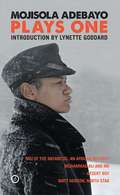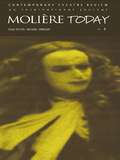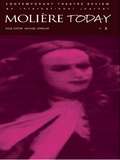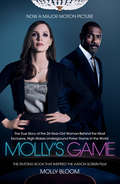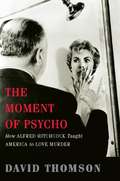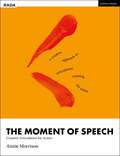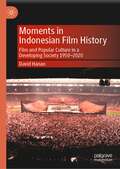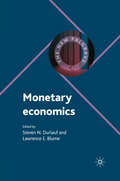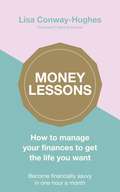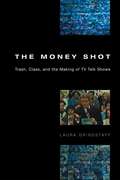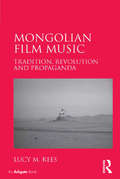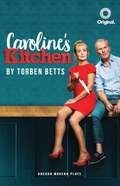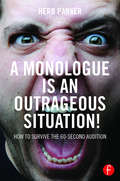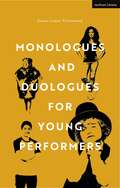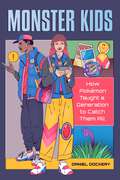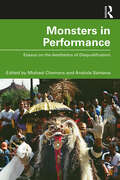- Table View
- List View
Mojisola Adebayo: Plays One (Oberon Modern Playwrights)
by Mojisola AdebayoIncludes the plays Moj of the Antarctic, Desert Boy, Matt Henson: North Star and Muhammad Ali and MeThis collection signals the emergence of a distinctive new voice on the British theatre landscape. Moj of the Antarctic is inspired by the true story of an African American woman who cross-dresses as a white man to escape slavery; taken on a fantastical odyssey to Antarctica. Time Out Critics’ Choice‘The language is rich and densely poetic. Reveling in the materiality and playfulness of words, cracking open complex ideas like eggshells.’ - Total Theatre MagazineMuhammad Ali and Me is a lyrical coming of age story, following the parallel struggles of a gay girl child growing up in foster care and the black Muslim boxing hero’s fight against racism and the Vietnam war.‘As a piece of stagecraft, an entertaining kaleidoscope of social and political history, only one description will do: this is a play that ‘floatslike a butterfly and stings like a bee.’ - WhatsOnStageDesert Boy, a time-travelling a capella musical, offers a sharp twist on the subject of knife crime, black youth and absent fathers.‘…a spiralling journey through colonial history not unlike Dante’s introduction to the Inferno. The juxtapositions are sometimes startling, and often quite comic.’ - Guardian Matt Henson, North Star is a biographical tale of Arctic betrayal, mixed with Greenlandic folk tales; all about love, climate and change.These plays queer the boundaries of sex and race, fact and fiction, history and geography, poetry and politics to illuminate contemporary themes through a dynamic African Diasporic theatrical aesthetic that leaps off the page.
Moliere Today 1
by Michael SpinglerThis collection focuses on Moliere's theatre as works to be performed as well as read. The essays deal in their various ways with limits which are imposed and respected or violated and broken. The question of transgression both as a subject within Moliere's plays and as a dilemma confronting Moliere's critics and interpreters is addressed. The book aims to enlarge the scope of academic scholarship and include the thinking and insights of actors.
Moliere Today 1
by Michael SpinglerThis collection focuses on Moliere's theatre as works to be performed as well as read. The essays deal in their various ways with limits which are imposed and respected or violated and broken. The question of transgression both as a subject within Moliere's plays and as a dilemma confronting Moliere's critics and interpreters is addressed. The book aims to enlarge the scope of academic scholarship and include the thinking and insights of actors.
Moliere Today 2
by Michael SpinglerThe refusal on the part of academic critics to recognize the primacy of farce in Moliere's theatre is contradicted by wide spread theatrical pracitce. These essays develop the argument that Moliere needs to be rescued from the pantheon of classical literature and put back on the Pont-Neuf with the strolling players, low-life rogues, cut-purses and clowns with whom he filled his theatre.
Moliere Today 2
by Michael SpinglerThe refusal on the part of academic critics to recognize the primacy of farce in Moliere's theatre is contradicted by wide spread theatrical pracitce. These essays develop the argument that Moliere needs to be rescued from the pantheon of classical literature and put back on the Pont-Neuf with the strolling players, low-life rogues, cut-purses and clowns with whom he filled his theatre.
Molly’s Game: From Hollywood's Elite To Wall Street's Billionaire Boys Club, My High-stakes Adventure In The World Of Underground Poker
by Molly BloomA SUNDAY TIMES BESTSELLER NOW A MAJOR MOTION PICTURE WRITTEN AND DIRECTED BY AARON SORKIN, AND STARRING JESSICA CHASTAIN, IDRIS ELBA, KEVIN COSTNER AND MICHAEL CERA The true story of the 26-year-old woman behind the most exclusive, high-stakes underground poker game in the world
The Moment of Psycho: How Alfred Hitchcock Taught America to Love Murder
by David ThomsonIt was made like a television movie, and completed in less than three months. It killed off its star in forty minutes. There was no happy ending. And it offered the most violent scene to date in American film, punctuated by shrieking strings that seared the national consciousness. Nothing like Psycho had existed before; the movie industry—even America itself—would never be the same.In The Moment of Psycho, film critic David Thomson situates Psycho in Alfred Hitchcock&’s career, recreating the mood and time when the seminal film erupted onto film screens worldwide. Thomson shows that Psycho was not just a sensation in film: it altered the very nature of our desires. Sex, violence, and horror took on new life. Psycho, all of a sudden, represented all America wanted from a film—and, as Thomson brilliantly demonstrates, still does.
The Moment of Psycho: How Alfred Hitchcock Taught America to Love Murder
by David ThomsonIt was made like a television movie, and completed in less than three months. It killed off its star in forty minutes. There was no happy ending. And it offered the most violent scene to date in American film, punctuated by shrieking strings that seared the national consciousness. Nothing like Psycho had existed before; the movie industry -- even America itself -- would never be the same. In The Moment of Psycho, film critic David Thomson situates Psycho in Alfred Hitchcock's career, recreating the mood and time when the seminal film erupted onto film screens worldwide. Thomson shows that Psycho was not just a sensation in film: it altered the very nature of our desires. Sex, violence, and horror took on new life. Psycho, all of a sudden, represented all America wanted from a film -- and, as Thomson brilliantly demonstrates, still does.
The Moment of Speech: Creative Articulation for Actors (RADA Guides)
by Annie MorrisonAnnie Morrison, creator of the Morrison Bone Prop, abandons the notion that language and thought are mainly processed in the left cerebral hemisphere, and coaches the actor to speak from the heart. Through this method, words acquire physical properties, such as weight, texture, colour and kinetic force. Think about Martin Luther King, Mao Zedong or Malala Yousafzai; potent speech impacts external events. And internally, it forms and shapes the world of the speaker. Seeing articulation as a purely mechanical skill is detrimental to an actor's process: it is crucial to understand what language is doing on a biological level. This workbook is invaluable for actors, both professional and in training, and also for voice and speech teachers.
The Moment of Speech: Creative Articulation for Actors (RADA Guides)
by Annie MorrisonAnnie Morrison, creator of the Morrison Bone Prop, abandons the notion that language and thought are mainly processed in the left cerebral hemisphere, and coaches the actor to speak from the heart. Through this method, words acquire physical properties, such as weight, texture, colour and kinetic force. Think about Martin Luther King, Mao Zedong or Malala Yousafzai; potent speech impacts external events. And internally, it forms and shapes the world of the speaker. Seeing articulation as a purely mechanical skill is detrimental to an actor's process: it is crucial to understand what language is doing on a biological level. This workbook is invaluable for actors, both professional and in training, and also for voice and speech teachers.
Moments in Indonesian Film History: Film and Popular Culture in a Developing Society 1950–2020
by David HananThis book explores Indonesian cinema, focusing on moments of unique creativity by Indonesian film artists who illuminate important but less-widely-known aspects of their multi-dimensional society. It begins by exploring early 1950s ‘Indonesian neorealist films’ of the Perfini group, which depict the ethos and emerging moral issues of the period of struggle for independence (1945–49). It continues by discussing four audacious political allegories produced in four discrete political eras—including the Sukarno, Suharto and Reformasi periods. It also surveys the main approaches to Islam in both popular cinema and auteur films during the Suharto New Order. One chapter celebrates the popular songs and B-movies of the Betawi comedian, Benyamin S, which dramatize the experience of the poor in ‘modernizing’ Jakarta. Another examines persisting Third World dimensions of Indonesian society as critiqued in two experimental features. The concluding chapter highlights innovation in a renewed Indonesian cinema of the post-Suharto Reformasi period (1999–2020), including films by an unprecedented generation of women writer-directors
Monetary Economics (The New Palgrave Economics Collection)
by Steven Durlauf L. BlumeSpecially selected from The New Palgrave Dictionary of Economics 2nd edition, each article within this compendium covers the fundamental themes within the discipline and is written by a leading practitioner in the field. A handy reference tool.
Money Lessons: How to manage your finances to get the life you want
by Lisa Conway-HughesIf you spent one hour a month nurturing your finances for the next twelve months, how would you feel this time next year, what would be different? Mapping out a plan for achieving your big goals and managing everyday spending, Money Lessons is your own pocket financial expert. Whether you have it or not, money is often as difficult to talk about as it is to handle. Many of us will at one point need advice on how to:- ask for a pay rise- save up to buy a place- pay for a mortgage- finance a career move- budget for a wedding- fund a big trip- get out of debt- retire comfortablyBuilding on her 15 years of experience helping countless people to make smart financial decisions, Lisa Conway-Hughes tackles these topics in a short guide to being savvy and getting what you want in every stage of your life. Full of expert knowledge and success stories, this is essential reading for anyone who wants to turn a dream into a plan - and eventually a reality.
The Money Shot: Trash, Class, and the Making of TV Talk Shows
by Laura GrindstaffHe leaped from his chair, ripped off his microphone, and lunged at his ex-wife. Security guards rushed to intercept him. The audience screamed, then cheered. Were producers concerned? Not at all. They were getting what they wanted: the money shot. From "classy" shows like Oprah to "trashy" shows like Jerry Springer, the key to a talk show's success is what Laura Grindstaff calls the money shot—moments when guests lose control and express joy, sorrow, rage, or remorse on camera. In this new work, Grindstaff takes us behind the scenes of daytime television talk shows, a genre focused on "real" stories told by "ordinary" people. Drawing on extensive interviews with producers and guests, her own attendance of dozens of live tapings around the country, and more than a year's experience working on two nationally televised shows, Grindstaff shows us how producers elicit dramatic performances from guests, why guests agree to participate, and the supporting roles played by studio audiences and experts. Grindstaff traces the career of the money shot, examining how producers make stars and experts out of ordinary people, in the process reproducing old forms of cultural hierarchy and class inequality even while seeming to challenge them. She argues that the daytime talk show does give voice to people normally excluded from the media spotlight, but it lets them speak only in certain ways and under certain rules and conditions. Working to understand the genre from the inside rather than pass judgment on it from the outside, Grindstaff asks not just what talk shows can tell us about mass media, but also what they reveal about American culture more generally.
The Money Shot: Trash, Class, and the Making of TV Talk Shows
by Laura GrindstaffHe leaped from his chair, ripped off his microphone, and lunged at his ex-wife. Security guards rushed to intercept him. The audience screamed, then cheered. Were producers concerned? Not at all. They were getting what they wanted: the money shot. From "classy" shows like Oprah to "trashy" shows like Jerry Springer, the key to a talk show's success is what Laura Grindstaff calls the money shot—moments when guests lose control and express joy, sorrow, rage, or remorse on camera. In this new work, Grindstaff takes us behind the scenes of daytime television talk shows, a genre focused on "real" stories told by "ordinary" people. Drawing on extensive interviews with producers and guests, her own attendance of dozens of live tapings around the country, and more than a year's experience working on two nationally televised shows, Grindstaff shows us how producers elicit dramatic performances from guests, why guests agree to participate, and the supporting roles played by studio audiences and experts. Grindstaff traces the career of the money shot, examining how producers make stars and experts out of ordinary people, in the process reproducing old forms of cultural hierarchy and class inequality even while seeming to challenge them. She argues that the daytime talk show does give voice to people normally excluded from the media spotlight, but it lets them speak only in certain ways and under certain rules and conditions. Working to understand the genre from the inside rather than pass judgment on it from the outside, Grindstaff asks not just what talk shows can tell us about mass media, but also what they reveal about American culture more generally.
The Money Shot: Trash, Class, and the Making of TV Talk Shows
by Laura GrindstaffHe leaped from his chair, ripped off his microphone, and lunged at his ex-wife. Security guards rushed to intercept him. The audience screamed, then cheered. Were producers concerned? Not at all. They were getting what they wanted: the money shot. From "classy" shows like Oprah to "trashy" shows like Jerry Springer, the key to a talk show's success is what Laura Grindstaff calls the money shot—moments when guests lose control and express joy, sorrow, rage, or remorse on camera. In this new work, Grindstaff takes us behind the scenes of daytime television talk shows, a genre focused on "real" stories told by "ordinary" people. Drawing on extensive interviews with producers and guests, her own attendance of dozens of live tapings around the country, and more than a year's experience working on two nationally televised shows, Grindstaff shows us how producers elicit dramatic performances from guests, why guests agree to participate, and the supporting roles played by studio audiences and experts. Grindstaff traces the career of the money shot, examining how producers make stars and experts out of ordinary people, in the process reproducing old forms of cultural hierarchy and class inequality even while seeming to challenge them. She argues that the daytime talk show does give voice to people normally excluded from the media spotlight, but it lets them speak only in certain ways and under certain rules and conditions. Working to understand the genre from the inside rather than pass judgment on it from the outside, Grindstaff asks not just what talk shows can tell us about mass media, but also what they reveal about American culture more generally.
Mongolian Film Music: Tradition, Revolution and Propaganda
by Lucy M. ReesIn 1936 the Mongolian socialist government decreed the establishment of a film industry with the principal aim of disseminating propaganda to the largely nomadic population. The government sent promising young rural Mongolian musicians to Soviet conservatoires to be trained formally as composers. On their return they utilised their traditional Mongolian musical backgrounds and the musical skills learned during their studies to compose scores to the 167 propaganda films produced by the state film studio between 1938 and 1990. Lucy M. Rees provides an overview of the rich mosaic of music genres that appeared in these film soundtracks, including symphonic music influenced by Western art music, modified forms of Mongolian traditional music, and a new genre known as ’professional music’ that combined both symphonic and Mongolian traditional characteristics. Case studies of key composers and film scores are presented, demonstrating the influence of cultural policy on film music and showing how film scores complemented the ideological message of the films. There are discussions of films that celebrate the 1921 Revolution that led to Mongolia becoming a socialist nation, those that foreshadowed the 1990 Democratic Revolution that drew the socialist era to a close, and the diverse range of films and scores produced after 1990 in the aftermath of the socialist regime.
Mongolian Film Music: Tradition, Revolution and Propaganda
by Lucy M. ReesIn 1936 the Mongolian socialist government decreed the establishment of a film industry with the principal aim of disseminating propaganda to the largely nomadic population. The government sent promising young rural Mongolian musicians to Soviet conservatoires to be trained formally as composers. On their return they utilised their traditional Mongolian musical backgrounds and the musical skills learned during their studies to compose scores to the 167 propaganda films produced by the state film studio between 1938 and 1990. Lucy M. Rees provides an overview of the rich mosaic of music genres that appeared in these film soundtracks, including symphonic music influenced by Western art music, modified forms of Mongolian traditional music, and a new genre known as ’professional music’ that combined both symphonic and Mongolian traditional characteristics. Case studies of key composers and film scores are presented, demonstrating the influence of cultural policy on film music and showing how film scores complemented the ideological message of the films. There are discussions of films that celebrate the 1921 Revolution that led to Mongolia becoming a socialist nation, those that foreshadowed the 1990 Democratic Revolution that drew the socialist era to a close, and the diverse range of films and scores produced after 1990 in the aftermath of the socialist regime.
Monogamy (Oberon Modern Plays)
by Torben BettsCaroline Mortimer, the nation’s second-favourite TV cook, has it all – a sparkling career, a big house in Highgate, a (golf) loving husband, smart kids and the best kitchen money can buy. But beneath the immaculate furnishings, studio lighting and away from the glare of the ever-present cameras – Caroline must face the looming collision of living a private life in the public eye. What happens when the cameras turn off and the truth comes out? Monogamy is another searing, state-of-the-nation tragicomedy from one of the UK’s most accomplished dramatists.
A Monologue is an Outrageous Situation!: How to Survive the 60-Second Audition
by Herb ParkerA Monologue is an Outrageous Situation! How to Survive the 60-Second Audition explains how to successfully tackle the "cattle call" acting audition with a sixty-second monologue. Through Q&As, tips, director’s notes, and a glossary full of outrageous actions meant to inspire the actor into truly connecting with the piece, this book shows actors where and how to find a monologue, edit it, and give the best audition possible.
A Monologue is an Outrageous Situation!: How to Survive the 60-Second Audition
by Herb ParkerA Monologue is an Outrageous Situation! How to Survive the 60-Second Audition explains how to successfully tackle the "cattle call" acting audition with a sixty-second monologue. Through Q&As, tips, director’s notes, and a glossary full of outrageous actions meant to inspire the actor into truly connecting with the piece, this book shows actors where and how to find a monologue, edit it, and give the best audition possible.
Monologues and Duologues for Young Performers (Audition Speeches)
by Emma-Louise McCauley-TinniswoodDo you struggle to find appropriate scenes and monologues for young performers? Whilst there are so many plays to choose from, the selection of material for auditions, exams and competitions can often be overwhelming. Monologues and Duologues For Young Performers offers a new collection of original monologues, duologues and scenes for young actors aged seven to fourteen that come ready-made for performance. With more than thirty new pieces for male and female actors of varying ages, these scenes explore a wide range of themes and characters and the accompanying notes suggest a range of activities for both the teacher and the student to help them develop the piece for performance. All the scenes have been tried and tested by young actors and many have been used in LAMDA examinations as well as for Speech and Drama Festivals and auditions. Each scene is accompanied by notes on character, background and setting as well as a range of drama activities and questions to ask as an actor, making it an ideal resource for those taking part in LAMDA and Trinity Speech and Drama examinations as well as for drama competitions, other examinations, auditions and theatre exploration.
Monologues and Duologues for Young Performers (Audition Speeches)
by Emma-Louise McCauley-TinniswoodDo you struggle to find appropriate scenes and monologues for young performers? Whilst there are so many plays to choose from, the selection of material for auditions, exams and competitions can often be overwhelming. Monologues and Duologues For Young Performers offers a new collection of original monologues, duologues and scenes for young actors aged seven to fourteen that come ready-made for performance. With more than thirty new pieces for male and female actors of varying ages, these scenes explore a wide range of themes and characters and the accompanying notes suggest a range of activities for both the teacher and the student to help them develop the piece for performance. All the scenes have been tried and tested by young actors and many have been used in LAMDA examinations as well as for Speech and Drama Festivals and auditions. Each scene is accompanied by notes on character, background and setting as well as a range of drama activities and questions to ask as an actor, making it an ideal resource for those taking part in LAMDA and Trinity Speech and Drama examinations as well as for drama competitions, other examinations, auditions and theatre exploration.
Monster Kids: How Pokémon Taught a Generation to Catch Them All
by Daniel DockeryThe definitive, behind-the-scenes look at why Pokémon's evolution from a single Japanese video game to global powerhouse captured the world's attention, and how the "gotta catch 'em all" mentality of its fanbase shaped pop culture—and continues to do so today. More than just a simple journey through the history of Pokémon, Daniel Dockery offers an in-depth look at the franchise&’s many branches of impact and influence. With dozens of firsthand interviews, Monster Kids covers its beginnings as a Japanese video game created to recapture one man's love of bug-collecting as a child before diving into the decisions and conditions that would ultimately lead to that game's global domination. With its continued growth as television shows, spin-off video games, blockbuster movies, trading cards, and toys, Pokémon is a unique and special brand that manages to continue to capture the attention and adoration of its eager fanbase 25 years after its initial release. Whether it was new animated shows like Digimon, Cardcaptors, and Yu-Gi-Oh!; the rise of monster-catching video games and trading card games; and more, Pikachu, the king of pop culture in the '90s, opened the doors in America to those hoping to capture some of Pokémon's dedicated fans. In Monster Kids, Dockery combines the personal stories of the people who helped bring Pokémon to the global stage with affection and humor, making this book the ultimate look at the rise of the franchise in Japan and then North America, but also the generation of kids whose passion for "catching them all" created a unique cultural phenomenon that continues to make a profound impact today.
Monsters in Performance: Essays on the Aesthetics of Disqualification
by Michael Chemers Analola SantanaMonsters in Performance boasts an impressive range of contemporary essays that delve into topical themes such as race, gender, and disability, to explore what constitutes monstrosity within the performing arts. These fascinating essays from leading and emerging scholars explore representation in performance, specifically concerning themselves with attempts at social disqualification of "undesirables." Throughout, the writers employ the concept of "monstrosity" to describe the cultural processes by which certain identities or bodies are configured to be threateningly deviant. The editors take a range of previously isolated critical inquiries – including bioethics, critical race studies, queer studies, and televisual studies - and merge them to create an accessible and dynamic platform which unifies these ranges of representations. The global scope and interdisciplinary nature of Monsters in Performance renders it an essential book for Theatre and Performance students of all levels as well as scholars; it will also be an enlightening text for those interested in monstrosity and Cultural Studies more broadly.
